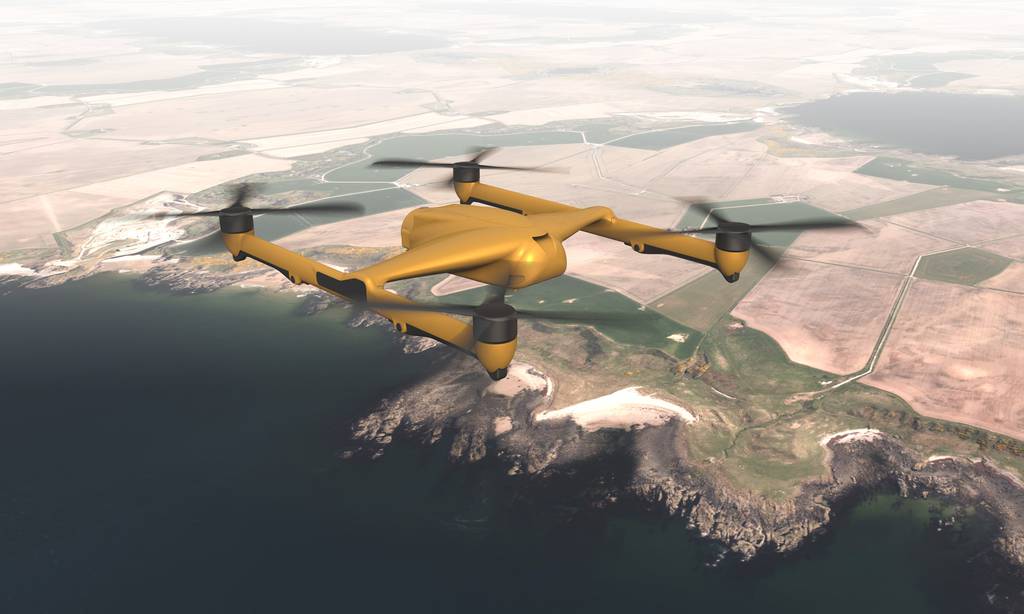MILAN – The increased demand for unmanned systems resulting from Russia’ war on Ukraine offers the potential to accelerate the exploration and transition towards remotely piloted platforms in a casualty evacuation role, according to experts.
Both the Russian and Ukrainian militaries have experimented to some degree with relying on unmanned systems to assist with the evacuation of wounded troops, given the threatening battlefield conditions they face.
The omnipresence of aerial drones and defense systems have made it increasingly difficult for traditional manned helicopters, for instance, to carry out rescue missions without being detected or attacked. With militaries around the world closely watching what is unfolding in Ukraine, experts say that we are likely seeing a shift in the roles unmanned platforms could fill in the future.
“What we are seeing here is a long-running transition to unmanned or remotely piloted systems, broadly to supplant crewed platforms, said Thomas Karako, senior fellow in the International Security Program run by the Center for Strategic and International Studies. “There is no question that the Ukraine conflict has massively increased the demand for all sorts of unmanned systems.”
“For just about every mission, the maturation of the technology for automated or remote piloting means that just about every platform could be a candidate for some kind of automated system,” he said in an emailed response to a question from C4ISRNET.
While Kyiv has primarily relied on unmanned robotics systems for CASEVAC, some companies are studying if these types of missions could be assumed by aerial drones.
Amongst them is BAE Systems, which is working with its subsidiary Malloy Aeronautics, on the electric T-650 heavy-lift unmanned aerial system. The quadcopter has a maximum payload of 300kg (661 lbs) and was most recently shown in a CASEVAC configuration at the World Defense News 2024, held in Riyad Feb. 4-8.
The T-650 was showcased at the arms show in a full-sized concept casualty evacuation pod carrying a dummy on a stretcher.
“We’re designing a pod that offers more than logistical movement of a casualty, which factors in patient protection and care during transit. As our concept matures into a first prototype, we’ll continue our engagement with the military medical community,” according to a BAE spokesperson.
The British Army has been testing the waters with several CASEVAC proof-of-concepts since 2022 as part of its Army Warfighting Experiment (AWE) program at the Portsmouth Naval Base. One of the tests previously carried out involved the use of a T-400 cargo drone, designed by Malloy Aeronautics, to transport an injured mannequin.
BAE said that while the company ie aware of the work being undertaken in the AWE project, it has not been directly involved.
“We have not set a fixed date for the first CASEVAC pod prototype [of the T-650], however we’re continuing to develop and design at a pace that ensures that customer involvement can be part of a process,” a BAE spokesperson said.
The U.S. Navy has also been testing out the idea of using unmanned boats to fulfill this role. During the International Maritime Exercise, held in February 2023 in the Middle East, the MARTAC T38 Devil Ray surface drone was used to move a medical mannequin from a U.S. ship to shore during a medical evacuation scenario.
The carriage of casualties via unmanned systems is a capability that has ways to go before it is formally introduced into service, as there remains important capability gaps in this domain.
Yet, the continuation of firms exploring this concept and military trials appear to signal a newly accepted trend in military systems, which experts say is also exemplified in the recent cancellation of manned platforms program.
“The U.S. Army’s cancellation of the FARA program in favor of some yet undetermined uncrewed system is but one of many such examples “ of transitioning to unmanned systems, CSIS’ Karako said.
Elisabeth Gosselin-Malo is a Europe correspondent for Defense News. She covers a wide range of topics related to military procurement and international security, and specializes in reporting on the aviation sector. She is based in Milan, Italy.








